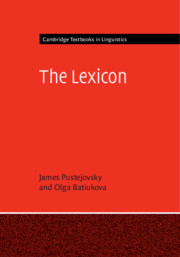Refine search
Actions for selected content:
1669 results in Computing: general interest
Challenge 146 - Shift Code
- from Part II - Chunky Challenges
-
- Book:
- Python by Example
- Published online:
- 28 May 2019
- Print publication:
- 16 May 2019, pp 150-152
-
- Chapter
- Export citation
Introduction
-
- Book:
- Python by Example
- Published online:
- 28 May 2019
- Print publication:
- 16 May 2019, pp 1-3
-
- Chapter
- Export citation
Challenges 52–59 - Random
- from Part I - Learning Python
-
- Book:
- Python by Example
- Published online:
- 28 May 2019
- Print publication:
- 16 May 2019, pp 45-50
-
- Chapter
- Export citation
Part I - Learning Python
-
- Book:
- Python by Example
- Published online:
- 28 May 2019
- Print publication:
- 16 May 2019, pp 9-10
-
- Chapter
- Export citation
Index
-
- Book:
- Python by Example
- Published online:
- 28 May 2019
- Print publication:
- 16 May 2019, pp 182-183
-
- Chapter
- Export citation
Challenges 27–34 - Maths
- from Part I - Learning Python
-
- Book:
- Python by Example
- Published online:
- 28 May 2019
- Print publication:
- 16 May 2019, pp 31-34
-
- Chapter
- Export citation
Challenges 139–145 - SQLite
- from Part I - Learning Python
-
- Book:
- Python by Example
- Published online:
- 28 May 2019
- Print publication:
- 16 May 2019, pp 134-146
-
- Chapter
- Export citation
Challenges 118–123 - Subprograms
- from Part I - Learning Python
-
- Book:
- Python by Example
- Published online:
- 28 May 2019
- Print publication:
- 16 May 2019, pp 99-109
-
- Chapter
- Export citation
Challenges 124–132 - Tkinter GUI
- from Part I - Learning Python
-
- Book:
- Python by Example
- Published online:
- 28 May 2019
- Print publication:
- 16 May 2019, pp 110-123
-
- Chapter
- Export citation
Challenges 1–11 - The Basics
- from Part I - Learning Python
-
- Book:
- Python by Example
- Published online:
- 28 May 2019
- Print publication:
- 16 May 2019, pp 11-16
-
- Chapter
- Export citation
Challenge 147 - Mastermind
- from Part II - Chunky Challenges
-
- Book:
- Python by Example
- Published online:
- 28 May 2019
- Print publication:
- 16 May 2019, pp 153-155
-
- Chapter
- Export citation
Challenges 60–68 - Turtle Graphics
- from Part I - Learning Python
-
- Book:
- Python by Example
- Published online:
- 28 May 2019
- Print publication:
- 16 May 2019, pp 51-57
-
- Chapter
- Export citation
Challenges 96–103 - 2D Lists and Dictionaries
- from Part I - Learning Python
-
- Book:
- Python by Example
- Published online:
- 28 May 2019
- Print publication:
- 16 May 2019, pp 79-85
-
- Chapter
- Export citation
Challenges 105–110 - Reading and Writing to a Text File
- from Part I - Learning Python
-
- Book:
- Python by Example
- Published online:
- 28 May 2019
- Print publication:
- 16 May 2019, pp 86-90
-
- Chapter
- Export citation
Challenges 88–95 - Numeric Arrays
- from Part I - Learning Python
-
- Book:
- Python by Example
- Published online:
- 28 May 2019
- Print publication:
- 16 May 2019, pp 72-78
-
- Chapter
- Export citation
Downloading Python
-
- Book:
- Python by Example
- Published online:
- 28 May 2019
- Print publication:
- 16 May 2019, pp 4-5
-
- Chapter
- Export citation
Part II - Chunky Challenges
-
- Book:
- Python by Example
- Published online:
- 28 May 2019
- Print publication:
- 16 May 2019, pp 147-149
-
- Chapter
- Export citation
Challenges 20–26 - Strings
- from Part I - Learning Python
-
- Book:
- Python by Example
- Published online:
- 28 May 2019
- Print publication:
- 16 May 2019, pp 24-30
-
- Chapter
- Export citation

The Lexicon
-
- Published online:
- 19 March 2019
- Print publication:
- 17 January 2019
-
- Textbook
- Export citation
Getting Started
-
- Book:
- Doing Better Statistics in Human-Computer Interaction
- Published online:
- 26 January 2019
- Print publication:
- 07 February 2019, pp 1-8
-
- Chapter
- Export citation
